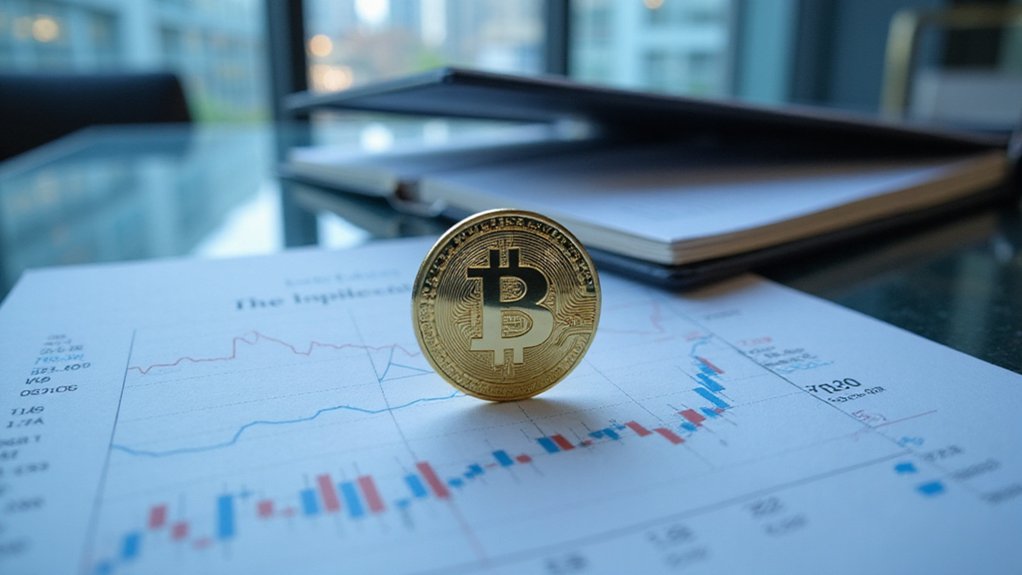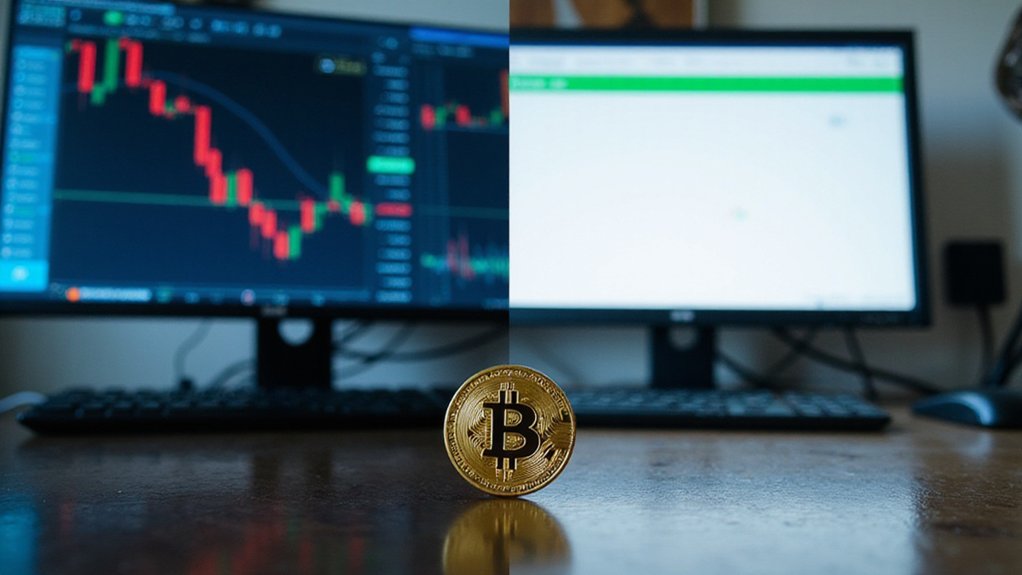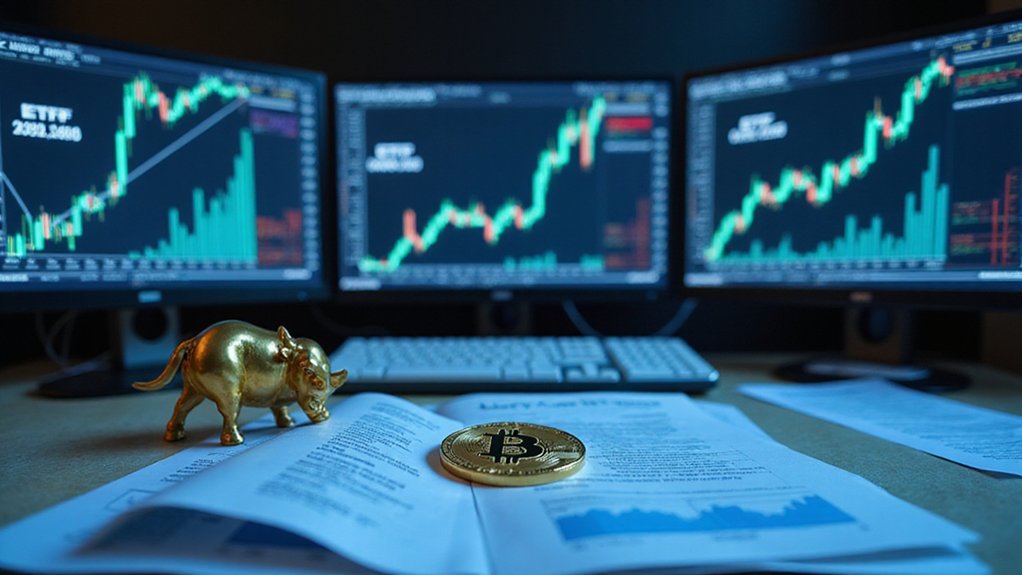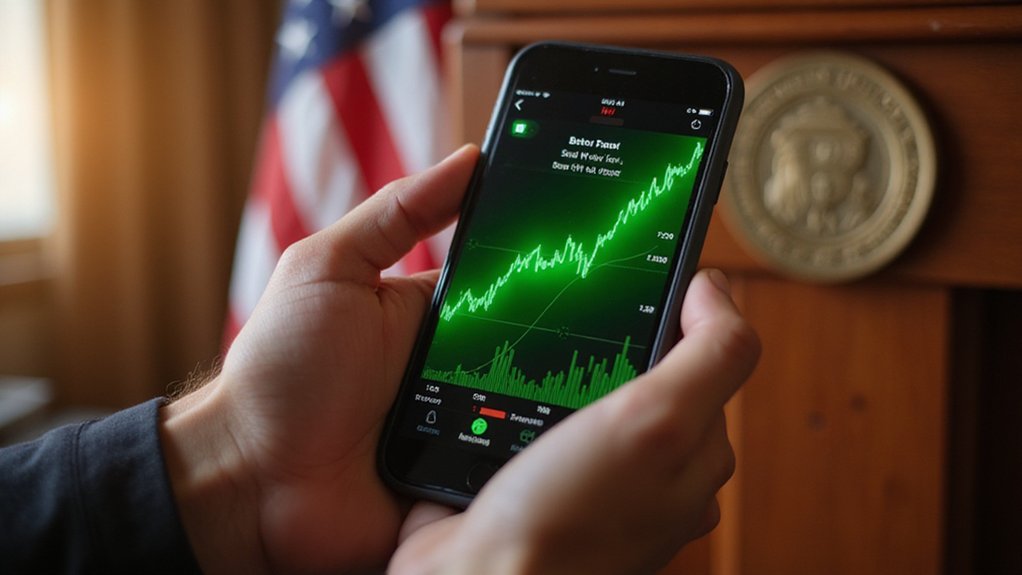A Litecoin ETF—should one materialize through the regulatory gauntlet—would allow traditional investors to gain cryptocurrency exposure without wrestling with digital wallets or private keys. Following Bitcoin ETFs’ billion-dollar blueprint, these vehicles would hold actual Litecoin reserves under institutional-grade security while trading on conventional exchanges. Investors face modest expense ratios (deceptively small until compound math enters the equation) and standard brokerage fees. The SEC’s blessing represents the final hurdle before Litecoin crosses the threshold from digital curiosity to mainstream financial instrument.

A Litecoin ETF represents the financial market’s inevitable march toward cryptocurrency integration—a structured investment vehicle that tracks Litecoin’s mercurial value while neatly sidestepping the technical complexities that have historically kept traditional investors at arm’s length.
The fundamental architecture involves an exchange-traded fund that holds actual Litecoin reserves or their derivative equivalents, issuing shares that trade on conventional stock exchanges with the pedestrian simplicity of buying IBM or Apple. This arrangement liberates investors from the Byzantine process of establishing crypto wallets or safeguarding private keys—conveniences that, unsurprisingly, come with their own fiscal considerations. The recent success of Bitcoin ETFs, with record inflows exceeding $1 billion in a single week, demonstrates the potential market appetite for cryptocurrency exposure through regulated investment vehicles.
Behind the seeming simplicity lies a sophisticated custody infrastructure where institutional-grade security measures (predominantly cold storage solutions) shield underlying assets from the digital vulnerabilities that periodically decimate unprotected cryptocurrency holdings.
These professional custodians—the invisible guardians of digital wealth—operate under rigorous protocols that would make traditional bank security seem almost quaint by comparison. The value proposition here is unmistakable: institutional-grade protection without requiring investors to become amateur cryptographers.
The financial machinery doesn’t operate gratis, of course. Annual expense ratios—those perpetual drains on investment returns—constitute the admission price to this simplified crypto exposure, generally hovering below the costs of self-managed portfolios yet accumulating meaningfully over extended holding periods. Market makers play a crucial role in ensuring price stability by continuously buying and selling shares to maintain alignment with Litecoin’s underlying value. Excessive automated trading of these ETFs could trigger request limit blocks that might temporarily affect market access during high-volume periods.
Brokerage commissions further diminish returns at entry and exit points, creating a financial friction that prudent investors must factor into their calculus.
Regulatory scrutiny remains the most formidable hurdle in this ecosystem. The SEC’s methodical evaluation process examines potential market manipulation risks inherent to Litecoin’s decentralized nature, with approval representing the golden key to mainstream investment channels.
This regulatory validation, should it materialize, would transform Litecoin from a specialized digital asset to a financial instrument accessible through the most conventional investment accounts—a shift that would mark cryptocurrency’s evolution from financial curiosity to legitimate asset class, albeit one still subject to volatility that would make traditional market participants blanch.
Frequently Asked Questions
How Does a Litecoin ETF Differ From Directly Buying Litecoin?
A Litecoin ETF differs from direct ownership in several key ways.
Investors purchase shares in a fund rather than actual cryptocurrency, eliminating wallet management and security concerns.
ETFs operate within traditional financial frameworks—traded on conventional exchanges, subject to established regulations, and managed by professionals who (naturally) extract fees for their trouble.
While direct ownership grants complete control and avoids management expenses, ETFs offer streamlined access through familiar investment channels without the technical complexities of cryptocurrency custody.
What Tax Implications Come With Investing in a Litecoin ETF?
Investing in Litecoin ETFs offers a more straightforward tax framework than direct crypto holdings.
These vehicles follow traditional securities taxation—short-term gains (held under one year) taxed at ordinary rates up to 37%, while long-term positions enjoy preferential rates capped at 20%.
The ETF structure elegantly sidesteps the byzantine reporting requirements of direct crypto ownership, sparing investors from the accounting gymnastics of tracking wallets, forks, and peer-to-peer transactions that so delight the IRS.
Can Litecoin ETFS Be Included in Retirement Accounts Like IRAS?
Yes, Litecoin ETFs can generally be included in retirement accounts like IRAs.
Traditional IRAs accommodate various ETF investments, while Self-Directed IRAs offer additional flexibility for alternative assets.
These accounts provide tax advantages—deferring gains until distribution in traditional IRAs or potentially tax-free growth in Roth IRAs (assuming qualified withdrawals).
While Fidelity’s crypto offerings currently focus on direct cryptocurrency investments rather than ETFs, the regulatory landscape continues to evolve, potentially expanding future options for retirement investors seeking cryptocurrency exposure.
How Do Litecoin ETF Management Fees Compare to Other Crypto ETFS?
While specific Litecoin ETF fees remain undisclosed, they’ll likely mirror the competitive landscape established by other crypto offerings.
Monochrome’s Bitcoin and Ethereum ETFs have set an industry benchmark with 0.25% expense ratios—a figure Litecoin products will presumably need to match or undercut to attract investor capital.
These fees, though seemingly modest, compound substantially over time and represent the premium investors pay for regulated exposure without the headaches of direct custody.
What Regulatory Challenges Might Affect Litecoin ETF Approval?
Regulatory hurdles facing Litecoin ETF approval include the SEC’s concerns about market manipulation in decentralized assets, custody solutions’ robustness, and compliance with Section 6(b)(5) requirements.
The agency’s scrutiny of Litecoin’s volatility and price stability mechanisms presents substantial challenges.
Additionally, the precedent set by earlier crypto ETF decisions (notably Bitcoin’s lengthy approval process) suggests the SEC may extend its review timeline while demanding extensive investor protection frameworks and market surveillance commitments.









